A guide to Portugal’s Alentejo province: where to eat, stay and play
Portugal’s Alentejo province is vast, rustic and completely underrated. Before the hordes arrive, enjoy its medieval villages, dynamic eateries and endless vineyards to yourself.

The açorda came to the table in a serving generous enough to feed a hungry farmer and his wife. It was a plain broth in which slices of sourdough bread had melted alongside a pearly slab of salt cod and a trembling poached egg. Pungent aromas of fried garlic, wild mint, and fistfuls of fresh coriander, rose from the bowl on a fug of steam. This was the kind of dish originally made to be eaten by country people with a heavy workload, large appetites and few resources.
I had come to the Alentejo through the back door. I happen to live a couple of hours away by car from this little-visited swathe of southern Portugal, but on the other side of the frontier at Spain’s western edge. Sailing through the un-manned border post I barely noticed the change of country – but I’d soon realise I wasn’t in España any more.
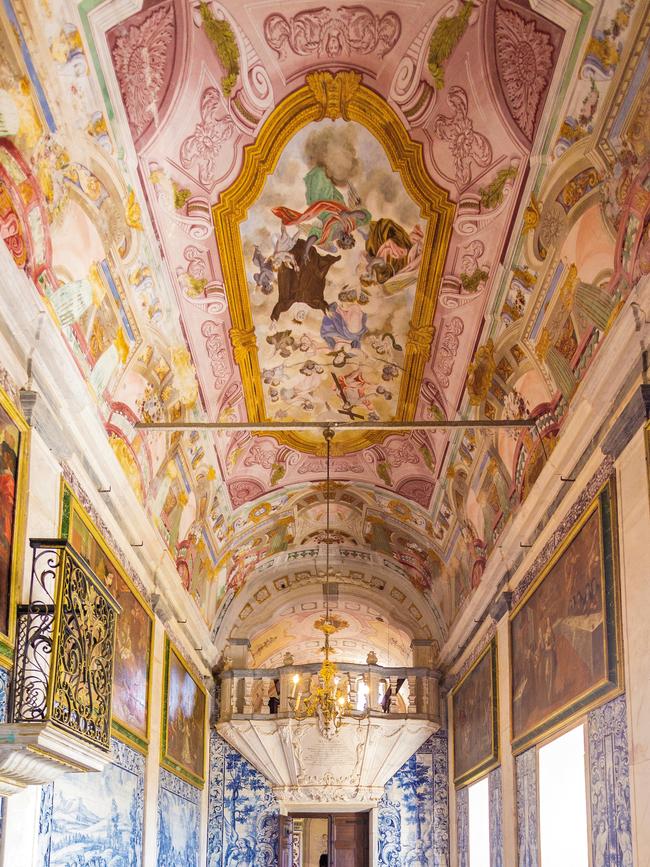
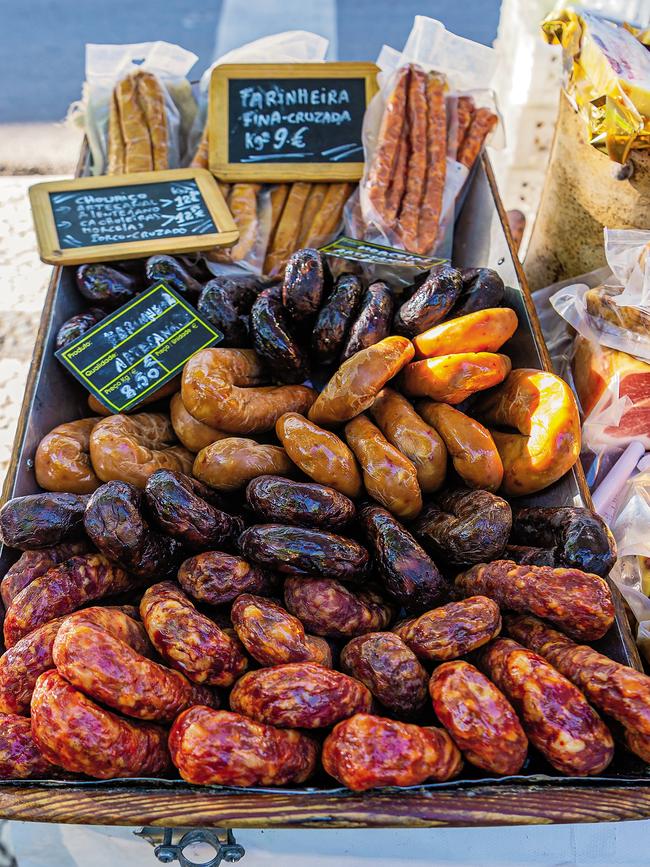
Already the signs were good. In culinary terms the Alentejo wears its heart on its sleeve. Rolling vineyards, their leaves an autumnal rust-red, stood beside olive groves where locals were busy harvesting, dislodging the green olives with long sticks onto nets spread out on the ground. Flocks of sheep grazed the open fields, and troops of black pigs could be seen snuffling for acorns under the holm-oak trees. There might be lamb on the menu, then, and I might even get to try some acorn-fed Ibérico ham. A towering billboard by the roadside bore the giant image of a steaming coffee cup – endless espresso shots (preferably with a sweet, eggy pastel on the side) being part and parcel of the daily Portuguese routine.
The first thing worth knowing about the Alentejo is that, by European standards at least, this is a big place. The land “beyond the Tagus”, which is how its name translates, occupies a third of Portugal’s surface area despite being home to just seven per cent of the population, stretching southwards from Lisbon along the unspoilt west coast and all the way east towards the Spanish border. Historically a backward region with a basic economy largely centred on cork production and hardscrabble agriculture, the Alentejo has long battled with the demons of chronic drought, poor communications, and depopulation. (The region is still among Europe’s least densely inhabited areas.)
On a bright November morning I rolled into Estremoz, a pretty town famous for its quarries of dazzling white marble. The Saturday produce market here is a great place to get your bearings in the world of Alentejano foods and flavours. As luck would have it, the town also has one of the region’s most highly regarded restaurants – Mercearia Gadanha, where Brazilian chef Michele Marques cleverly spins the simple truths of local cooking with a modern sensibility born, in part, from her big-city roots in Rio de Janeiro.
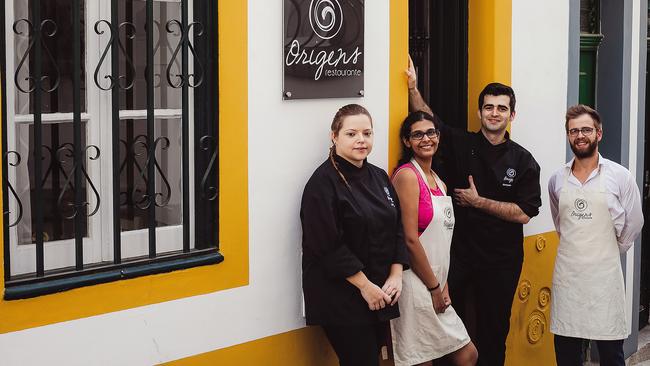
With an hour to go before lunch I roamed the market stalls, which were neatly set up on a broad old-town square. Vegetables and fruits from small local producers included seasonal, and typically Alentejano, products such as pumpkins, piles of big floppy cabbage leaves (a basic ingredient of the soup caldo verde), and dark little olives in garlic-scented brine. Livid-green bunches of coriander and peojo (pennyroyal mint) still glistened with the morning’s dew. Here were the sheep’s cheeses I’d hoped for: small roundels with hard skins and gooey centres. Charcuterie also appeared to be a thing around these parts. Quinta do Ti Vitor (“Uncle Victor’s farm”) sold home-made specialities like presunto ham from the black-foot pig, blood-sausage morcela, and smooth, doughy farinheira (smoked sausage) spiced with paprika.
West out of Estremoz the landscape unfurled into gentle hills, calming in their uncluttered, minimalist beauty. Mud-spattered tractors came and went on the single-track roads; otherwise, the traffic was sparse. Occasionally a small white town appeared – like lovely Monsaraz, clustered on a distant hilltop – or a low-rise, high-chimneyed farmhouse, its whitewashed walls trimmed with Mediterranean blue. From time to time an imposing gateway suggested that somewhere behind it lay a herdade or monte – the local designations for a large country property.
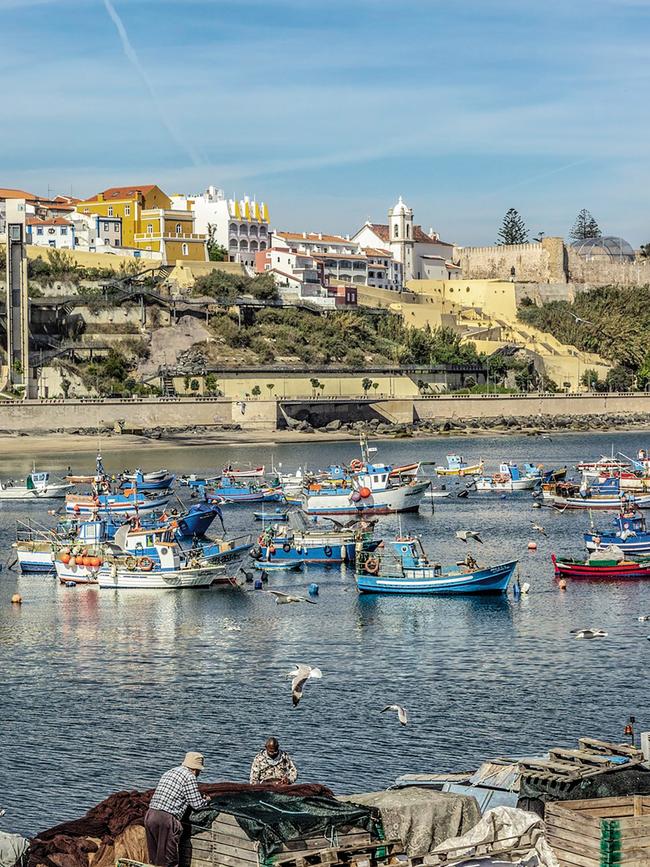
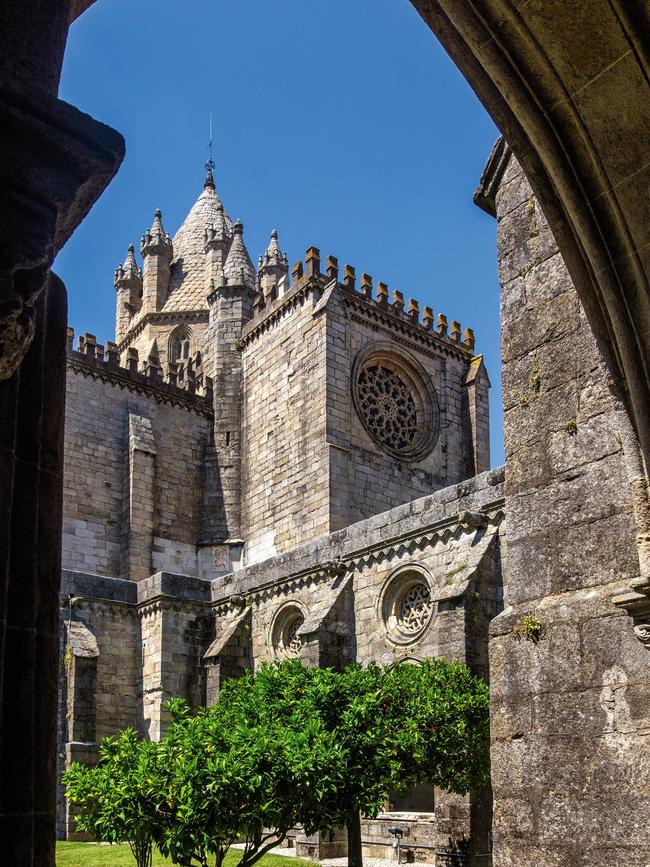
Food is landscape, but also politics and history. Land use in this part of Portugal derives from the Roman model of latifúndios, sprawling aristocratic estates worked by serf-like peasants who lived on them in self-contained communities. Many of these farms were expropriated by the Portuguese state after the Carnation Revolution of 1974, only to fall into ruin after years of bad management. São Lourenço do Barrocal, where I’d booked a two-night stay, was one such farm, eventually recovered by its original owners and reincarnated as a country-house hotel nonchalantly combining rural tradition with perfect taste.
If your time in the Alentejo were spent nowhere else other than at Barrocal you would still come away with a delicious impression of the local gastronomy. Farm life forms a picturesque backdrop to the sybaritic comforts of the hotel, which produces its own wine, olive oil, beef and pork, eggs, honey, fruit and vegetables. At lunch in the restaurant (formerly the kennels for Barrocal’s pack of hunting dogs) Alentejano chef Celestino Grave served me refined versions of the lamb stew ensopado and a savoury pap called migas (“crumbs”). Migas, like açorda, is a humble peasant dish based on day-old bread – though in Grave’s version it was speckled with herbs and held within a wafer-thin slice of acorn-fed ham fat. With it came a garden salad scattered with jewel-like pomegranate seeds.
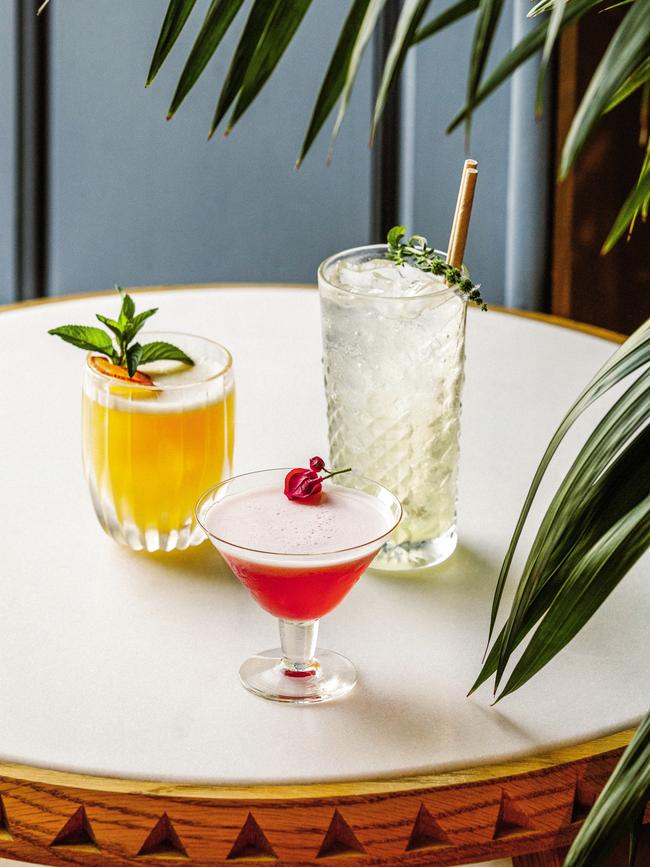
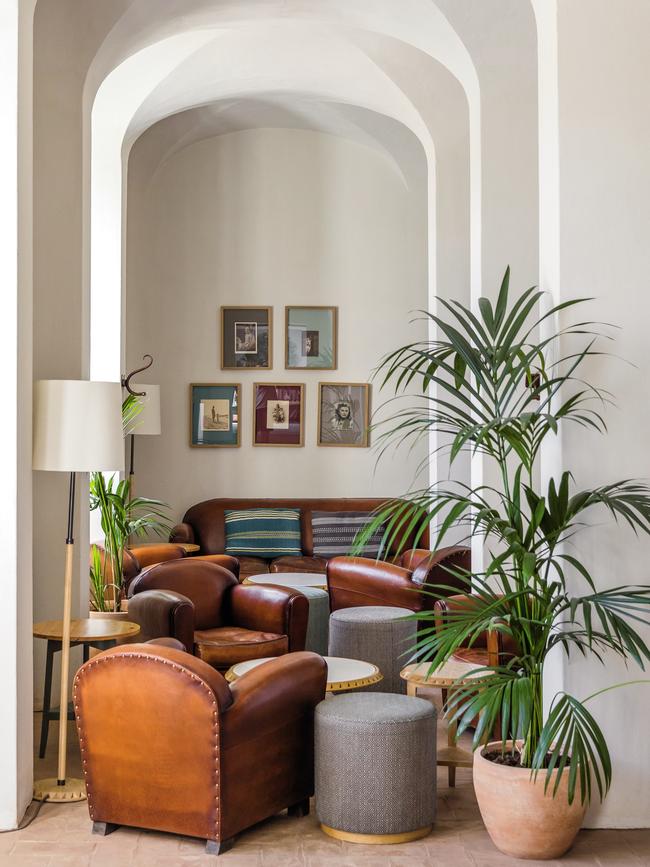
That evening I slipped out of the hotel and drove to Évora, de facto capital of the Alentejo and a dream of cobbled streets, Roman temples and gloomy Gothic churches. On a clear cold night the palaces and convents of the old town, drenched in whitewash, glittered in the moonlight. From a plethora of eating places both stubbornly old-fashioned (Fialho, Dom Joaquim) and bravely up-to-date (Cavalariça, Lombardo) I chose a little place behind the main square whose name, Origens, spoke of a passion for locally sourced ingredients prepared in respectful modern ways. Under the dining room’s vaulted ceiling chef Gonçalo Queiroz brought me farinheira sausage with dried black olive and beef cheeks from the rare Mertolenga breed, slow-cooked with vegetables for 24 hours until they fell apart under the fork. From a list strong on Alentejano wines Gonçalo recommended the elegant Private Selection 2017 red blend from Ervideira, a pioneering winery run by fourth- and fifth-generation of producers of the Leal da Costa family.
As a wine region the Alentejo has come on in leaps and bounds in recent years, morphing from a large-scale provider of rough-and-ready plonk into one of Portugal’s pre-eminent producers. The best adegas, like Ervideira or the ground-breaking Herdade do Esporão (where no less than 600 hectares of vineyards are all cultivated organically), make a big deal of fascinating indigenous grape varieties such as the aromatic white antão vaz and the fragrant reds alfrocheiro and moreto. Under the direction of Australian winemaker David Baverstock, who ran the show here for 30 years, Esporão became a byword for forward-thinking practices in the vineyard and cellar. (It also has an excellent visitor centre and Michelin-starred restaurant.) Less well-known is the estate’s state-of-the-art olive oil business. In her office high above the stainless-steel machinery of the mill Esporao’s olive oil director Ana Carrilho took me through a range of oils from local varieties Galega, Cordovil and Cobrançosa. Their reverberant aromas – apple and banana, nuts and herbs – positively leapt from the blue-glass tasting vessels they were presented in.
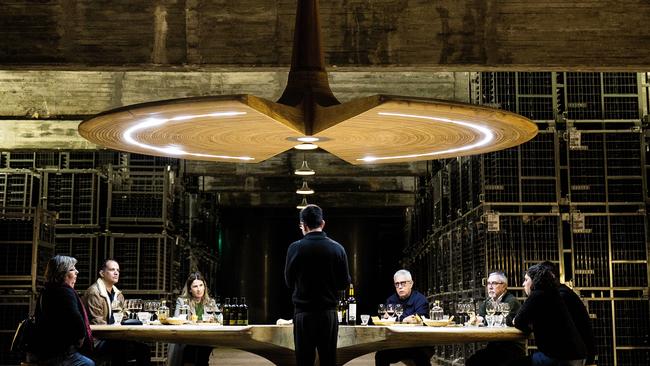
The further south I drove the wilder and emptier the countryside became. Beja, the Alentejo’s second “city”, was in reality a quiet provincial town which the hammer-blow heat of the Alentejo summer seemed to have left in a permanent daze. The southern end of the region is if anything even less-visited than the north, but a few good things are worth making the detour for. A highlight for me was Beja’s much-loved pastelaria Luiz da Rocha where the sweetmeats in various permutations of egg yolk and almonds and the speciality queijada, a golden-topped miniature cheese tart, bring in the sweet-toothed locals from miles around. Another was the Gerações da Talha winery in Vila de Frades, where young Teresa Caeiro carries on the town’s ancient tradition of artisan wines made in Ali Baba-style clay pots or talhas.
But the main reason to venture down this way is Herdade da Malhadinha Nova, a spectacular country estate and winery and the last port of call on my epicurean journey. Like São Lourenço do Barrocal, Malhadinha was nationalised after 1974, subsequently reclaimed (in this case by the Algarve-based Soares family) and magicked into a special place in which to eat, drink, and take your ease. As a country-house hotel for the 21st century Malhadinha certainly takes some beating. Guests are accommodated in various buildings around the property, all but one of which are gorgeously appointed barns and dwelling houses. The odd one out, where I slept, was Casa das Pedras, a modernist pavilion in raw textured concrete (by Portuguese architect Joana Raposo) sunk into the hillside like the world’s most luxurious bunker.
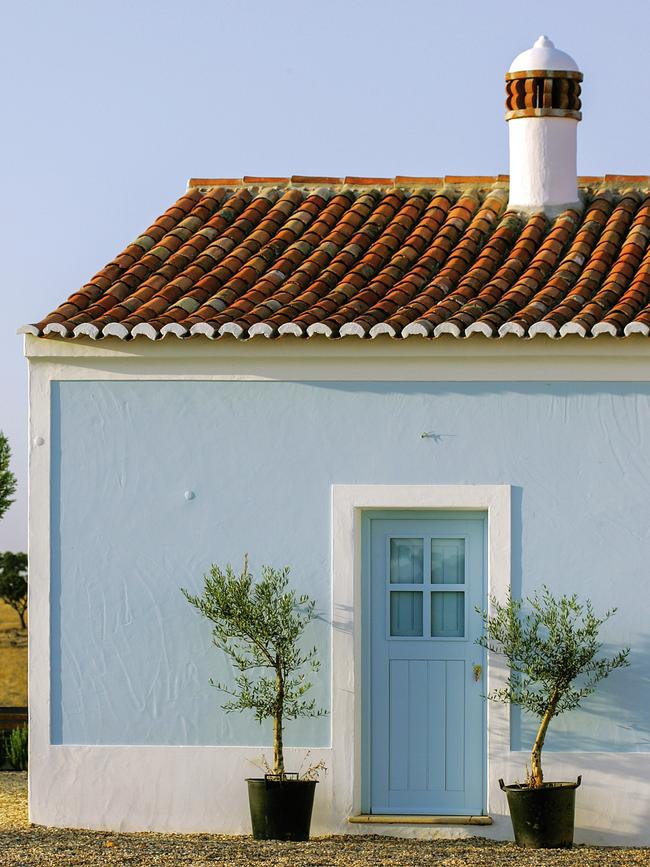
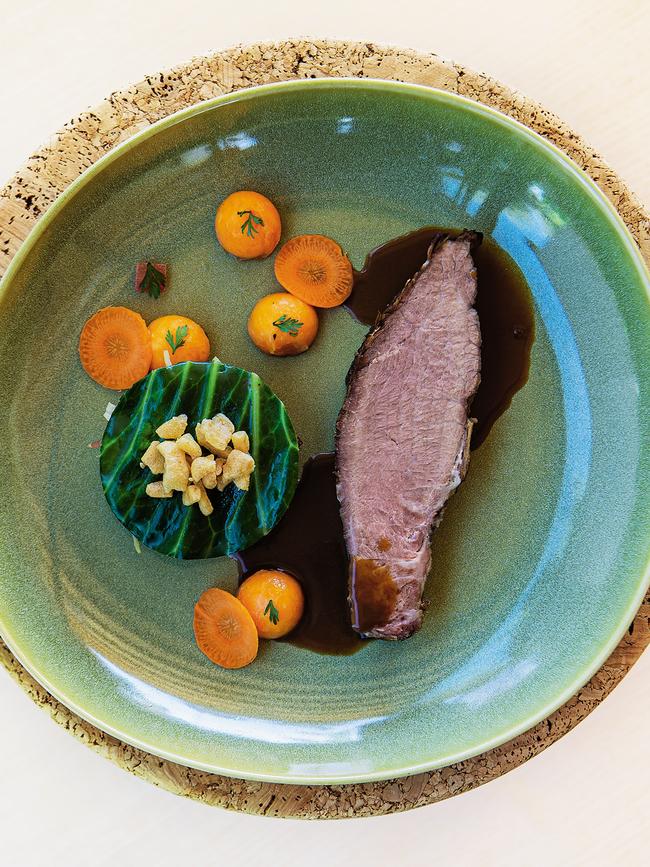
From my base in this architectural masterpiece I pottered around the estate in an electric golf buggy. Distributed around the Herdade I found olive groves, fruit trees, beehives, an organic vegetable patch, a stud farm, and hectare after hectare of vineyard. And as I’d been discovering over the last few days in the Alentejo, what you saw was, essentially, what you got. The wines I tried at Malhadinha’s at a sleekly designed tasting centre and shop were redolent of minerals, herbs and hedgerow fruits – the authentic flavours of the terroir. There was farm-made honey for breakfast, and slices of ham from the black-foot pigs I’d seen feasting on acorns in the holm-oak forests of the estate. Most nights of the week chefs Tomás Pereira and João Sousa did a fine new-wave-Alentejano thing with farm-to-fork ingredients. But on Monday night it was the turn of Vitalina Santos, a local woman deeply versed in traditional cooking, to take the stage.
With Vitalina at the stove there emerged from the kitchen a richly savoury lamb ensopado, a soupy rice with partridge, a creamy-eggy sericaia pudding – a parade of regional classics. Her food felt like a summation of everything I’d tasted since I first crossed the border four days earlier: the rib-sticking migas and comforting açordas, the deep-flavoured meats, the bracing blasts of pennyroyal and coriander, the sweet treats made with egg yolks and almonds. In essence this was still the food of farmers and shepherds, as simple and substantial as the landscape that engendered it. I tottered back to my bunker under a huge sky alive with stars.
WHERE TO STAY
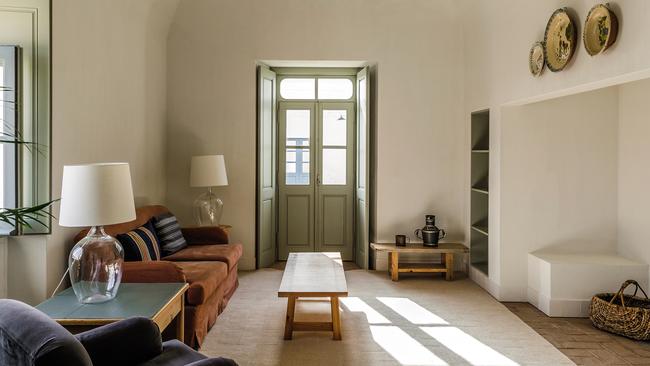
São Lourenço do Barrocal: Not so long ago, accommodation in the Alentejo was about basic farm stays. Barrocal, a 780-hectare estate outside the town of Monsaraz, has changed the game with the elegant rusticity of its 40 rooms and cottages. Owner José António Uva, eighth generation of the same landowning family, presides over a working farm that provides most of the ingredients (including wine and olive oil) for the hotel’s in-house restaurant. Tours and activities include an archaeological walk through the estate and hands-on experiences in the vineyard. Don’t miss the on-site shop and its exquisitely curated collection of Portuguese craft items. Double rooms start at €380 including breakfast. barrocal.pt
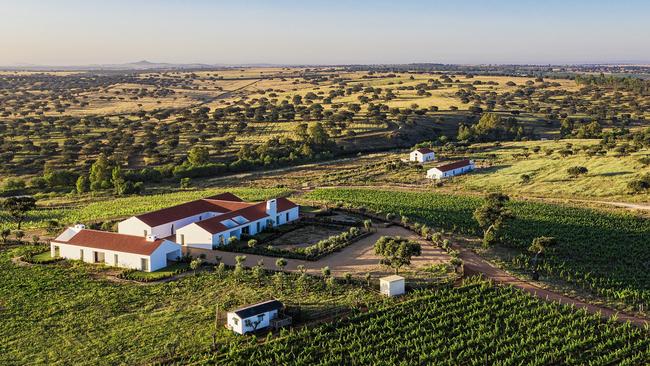
Herdade da Malhadinha Nova: Agriculture and hotel-keeping complement each other at this sweeping rural property outside Beja. Dirt tracks wind among fields and woodlands between the estate’s various houses each of which (thanks to CEO and designer Rita Soares) has its own characteristic look: sleek modernism at the on-site wine shop, contemporary-classic in the historic dwelling house, and the radical chic of Casa de Pedras – four expansive suites and terraces, modernist furnishings and private pools. Both cuisine and service are as highly geared as you might expect from a Relais & Châteaux hotel. Double rooms from about €400; three-suite villa from €2400. malhadinhanova.pt
WHERE TO EAT
Fialho: This family-owned restaurant in Évora has been serving authentic Alentejano cuisine since 1945, excelling at regional specialties including black pork cheeks in red wine and roast partridge with potatoes and carrots. restaurantefialho.pt
Origens: Classic dishes, including “forgotten” ones, meet modern technique at this Évora restaurant helmed by canny chef Gonçalo Queiroz. Queiroz has a yen for all things sustainable, seasonal and succulent. origensrestaurante.com
Cavalariça: With a vibrant interior design by Jacques Grange and a brightly painted patio, this Évora noshery is a joy to behold. The menu by Chilean chef Catalina Viveros is equally cheery, inventive and enticing. cavalarica.com
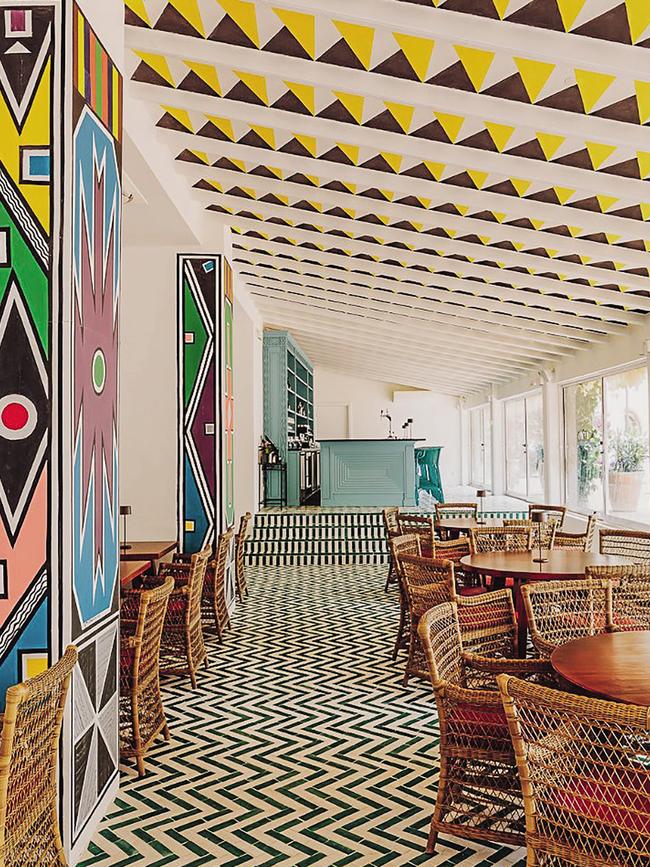
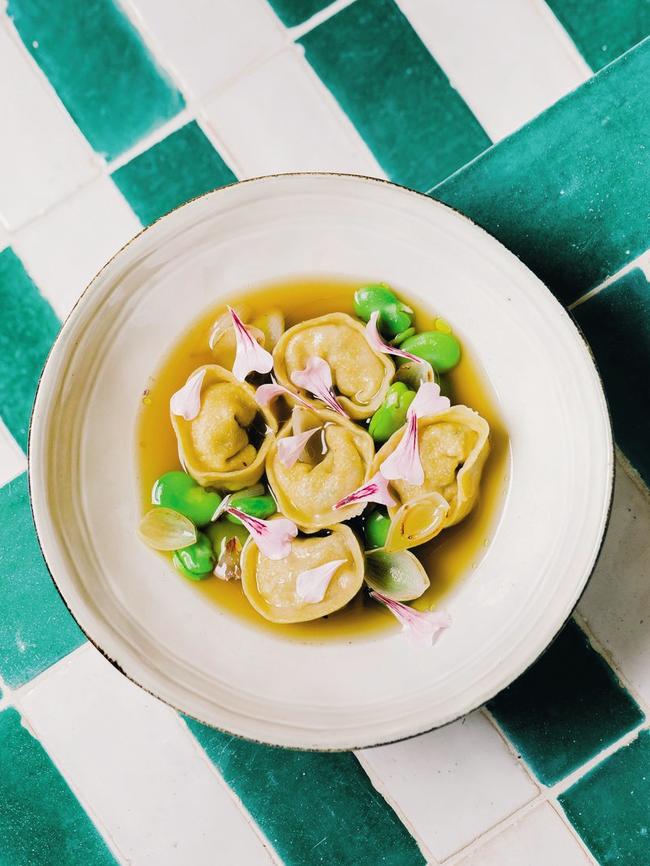
Dom Joaquim: Bread soup with cod, fish stew with prawns, and grilled black pork are among the popular plates at this Évora eatery headed up by chef Joaquim Almeida. Stone walls and quirky sculptures lend it a cosy vibe. restaurantedomjoaquim.pt
Mercearia Gadanha: This unassuming diner in Estremoz resembles an old-school grocer, with gourmet displays and a wine cellar, but the cooking is refined and confident. merceariagadanha.pt
Pastelaria Luiz da Rocha: The antecedents of this café and pastry shop in Beja reach back over a century. It’s ideal for a coffee break where you can discover the delicacies of the region. luizdarocha.com

To join the conversation, please log in. Don't have an account? Register
Join the conversation, you are commenting as Logout